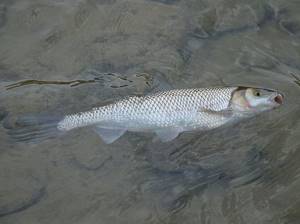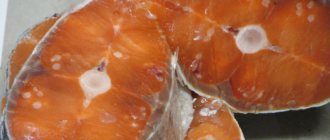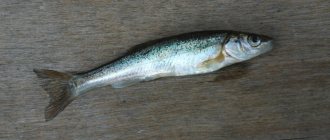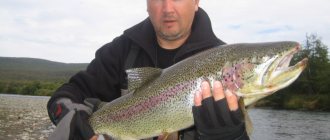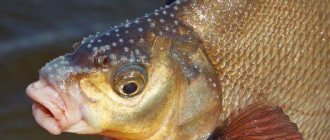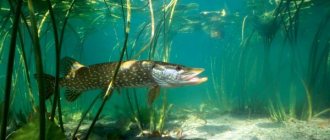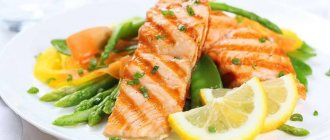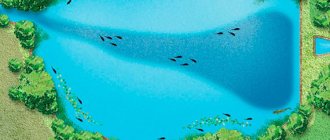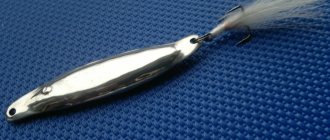This rare freshwater fish from the carp family is endangered and is listed in the Red Book of Russia. Therefore, carp fishing is strictly regulated by fisheries legislation. Currently, measures are being taken to restore the population in the water bodies of the Azov-Black Sea basin.
In the Volgograd region there is a fish hatchery located near the main natural spawning grounds of this species. In the future, this will help remove it from the list of endangered species.
A little history
The birthplace of this fish is considered to be the modern waters of the Caspian Sea, which in ancient times was a single whole with the Black and Azov seas, and had much less salinity than now.
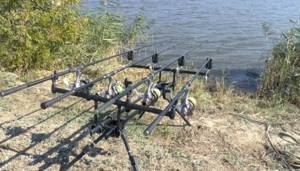
Subsequently, there was a division into two subspecies - the carp itself and the kutum, which is now a commercial species in northern Iran and Azerbaijan.

In the 20th century, the boom in the construction of hydroelectric power stations on large Black Sea rivers significantly affected the distribution area of the species for the worse.

Carp: why was the fish given such a name?
Carp is a freshwater fish from the carp family. Its closest relative is the roach, which the carp, by the way, is very similar in appearance to.
But unlike the roach, the carp has a curved snout, small eyes and strong pharyngeal bones with strong, powerful teeth, for which, in fact, it got its name. In addition, its tail fin is larger and wider than that of a roach, but the scales of a carp are much smaller.

Carp (Rutilus frisii).
The back of this fish is dark, with a green tint, and the belly is white. The sides are light silver. The caudal and dorsal fins are dark in color, and the rest are light gray.
The carp is a fairly large fish, it reaches more than 6 kilograms of weight and a length of more than 60 centimeters.
The carp leads a semi-anadromous lifestyle, but recently, thanks to dams built on some rivers, residential forms have also appeared. It is found mainly in desalinated areas of the Black, Azov and Caspian seas, and for spawning it goes many kilometers upstream of rivers, thus entering the Danube, Dnieper, Don, Terek, Kura. Prefers rivers with rocky soil and fast currents. The carp enters the rivers at the beginning of autumn, spends the winter in them and spawns with the onset of spring. In summer, this fish is practically not found in rivers, with the exception of the individuals of residential forms that we have already mentioned.
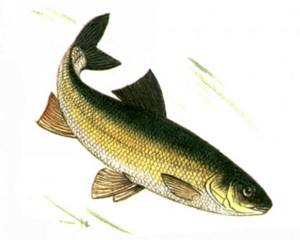
Cuts are quite large fish.
The carp reaches sexual maturity at the age of four to five years, reaching a length of about 40 centimeters.
The carp always prefers to stay in the deepest and fastest places of the river and only at night comes out to shallow water in search of food. Its diet includes worms, insects and all kinds of shells, which it easily chews with its powerful teeth. It also feeds on the eggs of other fish species.
Male heathers acquire a very beautiful outfit during the mating season. Their back, head and sides (above the lateral line) are covered with pearl-colored hard tubercles, and the fins become pinkish-blue with a pearlescent sheen.
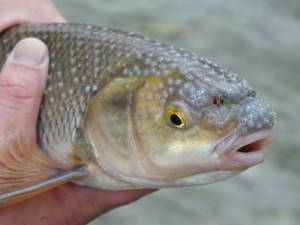
The carp is a predatory fish.
In the Southern Bug, for example, two carp runs are noted. The first occurs in the spring, as soon as the ice begins to break up and continues until April, the second in the autumn - from July until the rivers are covered with ice. Autumn males, although they will spawn only after 8-10 months, still “dress” in “nuptial” attire in advance. At the end of spawning, the fins acquire their normal color and the tubercles disappear.
The spawning begins in early May and lasts for three weeks, and does not stop even at night. As a rule, the female goes to spawning accompanied by several males. She rubs her abdomen against the stones so hard that abrasions and even wounds appear on her body. The males rub their sides and head, which are strewn with tubercles, against the female. The fertilized eggs thus end up under the stones.
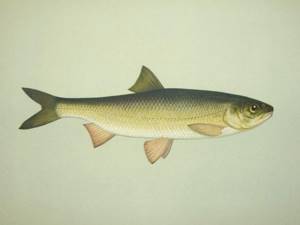
The carp is a fish of the Caspian basin.
One of the varieties of carp is kutum, which is found in the waters of the middle and southern Caspian Sea and is slightly different in the nature of spawning and development of larvae. Kutum spawns in slow water and is not so picky about the bottom soil. It leaves larvae not only on stones, but also on plant roots and even in reed thickets. Kutum larvae attach to plants rather than “hide” under stones.
Both carp and kutum are valuable commercial fish, their meat is very tasty. Iranians especially love it; kutum is included in many recipes for their national dishes. Recently, artificial breeding of these fish species on fish farms has become increasingly widespread.
If you find an error, please select a piece of text and press Ctrl+Enter.
Description
In the photo, the carp can be easily distinguished from other cyprinids by the characteristic curve of the snout and the disproportionately wide caudal fin.
The sizes are quite large - an adult can reach up to 80 cm in length and gain weight up to 6-7 kilograms.
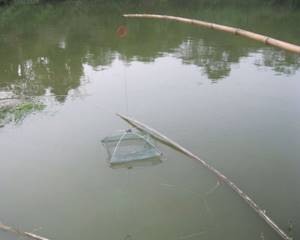
Large scales change color from the back to the abdomen from darker to almost white with a silvery tint
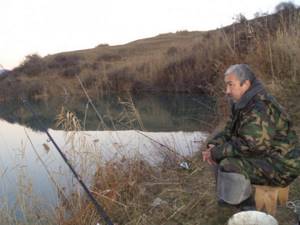
Character
In the description of the habits of the carp fish, its extreme caution and secretive lifestyle stand out.
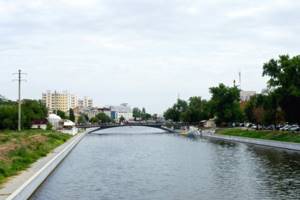
Most of the time is spent at the bottom of the reservoir and in shelters; it rises to the surface very rarely after making sure it is safe.
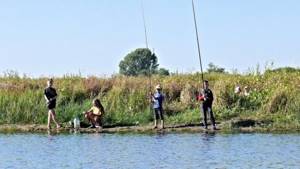
Almost all activity occurs at night, when the fish goes out in search of food.
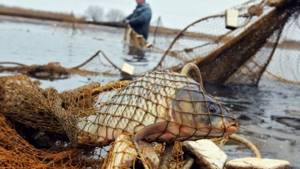
Very cunning carp
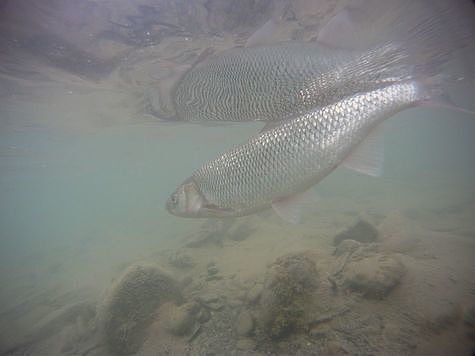
Warm hot days, the water level in the river is minimal. Algae and mud float along the river; the current is very weak.
It is at this time that a carp with the local name “whitefish” enters the river from the sea. Huge fish by Khosta standards scurry around the mouth here and there, awakening the excitement of local fishermen.
The only problem is that they ignore all the bait and all the gear they are trying to catch with. Usually here carp are caught using corn, processed cheese, mussel meat, bread and mud. In the same situation, all this does not work due to the very weak activity of the fish. More precisely, it still shows movement activity, but feeding activity is almost zero.
Read the material “Keep your nose to the wind”
Walking past the mouth, observing the behavior of the carp and asking local fishermen, I became eager to catch one. The size of the fish that came into view ranged from half a kilogram to one and a half kilograms. And, nevertheless, I assembled a very delicate blind float tackle.
It consisted of a lightweight carbon fiber rod with a very thin tip, a main line of 0.14 mm, and a small float in the form of a black barrel with a load of 0.75 grams. A weight in the form of a pellet, attached to a fluorocarbon leash 1 meter long with a diameter of 0.11 mm and a hook with a short shank made of thin wire of dark color No. 8.
I understood perfectly well that it was very difficult to pull out a very strong and fast fish with such gear without getting a break. However, I had the task of at least getting a bite.
Local fishermen gave a hard verdict that the “white” does not bite at all, and it is not worth wasting time on it. At any cost, I really wanted to refute this by at least getting a bite. So, the hunt for carp, which lasted 4 days, began.
Since rare bites of medium-sized carp on bread crumbs still happened when fishing for podust with bait, I started fishing with bread. On the first day, by some unimaginable miracle, I managed to catch a small carp of 250 grams, which for some reason was in a school of subs at the time of the bite. But the target of my hunt still continued to swim majestically in the clear water, ignoring all my wiring.
The second day of fishing with bread and mud also did not bring the desired result.
On the third day, I persuaded my childhood friend and very experienced fisherman Nikolai Tokarsky to go fishing with me. When my experience, knowledge, and dexterity are lacking, I do not hesitate to seek advice from more experienced fishermen who know the local specifics of fishing.
|
| Photo: Gennady Shelyag. |
First we found a special mud. It should not be too soft and not too hard. Also, the color should be brown, not green. Most of the mud and grass on the river are bright green and you really want to fish with this kind of mud, however, this would be a gross mistake.
Read the material “How to catch a chub on bread”
Next, the mud must be put on the hook in a special way, without touching it with your fingers. It should hang on the hook in the form of a drop or “in the form of snot,” as local fishermen not very culturally express it.
We did all this, but we didn’t get a single bite on the mud. The carp swam right under our rigs, saw this mud and did not show the slightest desire to take it.
My friend switched to fishing for submouth and gave me one very valuable piece of advice: “Put a big crumb on the hook, double the depth, put it on the bottom and wait until the fish picks it up - this is the only chance.” I did just that - I lightly pressed a crumb about 2 cm in size to the hook and put it on the bottom in the place where the monsters appeared.
I could see everything very well and this fishing could without a doubt be called sneak fishing. The carp swam quite confidently, but at the slightest movement of the silhouettes on the surface, it immediately ran away.
At the next appearance of the fish, I froze and held my breath. The fish spun in place and headed towards my bait. My knees began to shake and my heartbeat stopped. As soon as she grabbed the bread crumb, I made an instant, premature hook - my nerves just couldn’t stand it. The fish left the scene faster than lightning.
But the main thing is that the key was found! Around the 4th bite, I finally hooked my long-awaited trophy. The carp, raised to the surface, made two desperate jerks to the side and in this case I was saved by a high-quality leash, the correct angle of grip of the rod and its excellent shock-absorbing qualities.
After 3-4 minutes of struggle, with the help of my friend Nikolai, who came running in response to my cries for help, the fish ended up in the landing net.
Its exact weight was 720 grams. For me it was a real victory!
|
| Photo: Gennady Shelyag. |
I haven't been so happy about catching fish for a long time. It has long been no secret that the most difficult fish is always the most interesting and most desirable.
Read the material “Fairytale Sleeping”
The next day there was no carp activity at all. He did not appear from the depths, and I joked that by catching a fish I had undermined my fishing karma. Of course, this is a joke.
Fishing, regardless of its result, always brings us a lot of pleasure and truly decorates our lives.
Gennady Shelyag July 11, 2021 at 01:26 pm
Nutrition
It has a powerful jaw with developed teeth, which is typical for predators, but does not feed on other fish. It uses its physiological qualities to crack the shells of river mollusks.
The diet also includes various freshwater plankton, insect larvae, and worms. It is not voracious and can go without food for a long time.
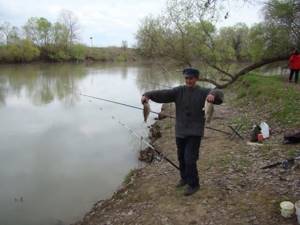
Carp baits
Schools of carp can be attracted to a specific place if you use groundbait for several days, which must include bait.
You can catch carp using the following bait as bait:
- Insects: fly larvae, dragonflies;
- Red worms;
- Crayfish and shrimp meat;
- Shellfish meat;
Artificial baits are practically not used in catching this fish. Recently, this fish has become very rare. In Russia it is listed in the Red Book. In places where fishing for carp is allowed, it is worth checking with local fishermen about the bait with which carp can be caught.
Spawning
Maturation for reproduction occurs at the age of 4-5 years. Spawns twice a year - in spring and autumn. During the mating season, the body of males is covered with special warty growths that attract females.
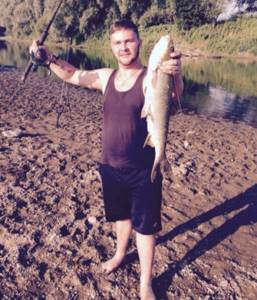
In addition to decorative ritual qualities, they also have a practical function - with their help, the male clears the place for future laying.
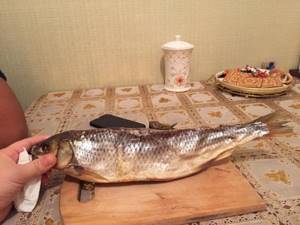
Where does the carp live?
The carp is a fish that lives only in the basin of two seas: the Caspian, Azov and Black. It can be found in coastal waters:
- In the Azov and Black Sea basin: Russia, Ukraine, Romania, Bulgaria, Turkey, Georgia;
- In the Caspian Sea Basin: Russia, Kazakhstan, Turkmenistan, Iran, Azerbaijan.
This fish does not like noise and avoids people. You should look for carp in the morning, at night and in the evening in calm places with a rocky or pebble bottom. The fish does not like very warm water and prefers to stay near the bottom. The carp practically does not rise to the surface.
The carp prefers to stay at the mouths of rivers flowing into the sea. To spawn, it either goes to desalinated reservoirs or goes upstream. Keeps in small flocks.
Commercial significance
Production on an industrial scale applies only to the Persian subspecies. In southern Russia, even recreational fishing by legal method is possible only with permission.
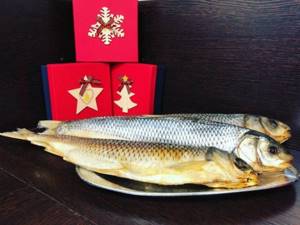
High gastronomic qualities have led to the widespread cultivation of fish in artificial conditions; in the southern federal district there are many fish farms specializing in this species.
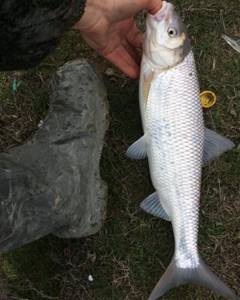
Photo of carp fish
Read here Mackerel - a description of the fish in its habitats, methods and tips on what to catch mackerel with (85 photos + video)
Help the project, share on social networks 

0
Fish reproduction
Puberty occurs at 4–5 years. The carp enters rivers after they open to spawn, choosing shallow areas of the river bed with a rocky bottom, fast currents and clear water. As soon as the water warms up to ten degrees, the males begin to prepare places for spawning.

Fertility is high - from 50 to 150 thousand large, heavy eggs. The shell is covered with a thick layer of villi, thanks to which the eggs stick to the stones. After spawning, the fish return to their usual habitats. During migration, the fry begin to feed on crustaceans and mollusks that live at the bottom of reservoirs.

